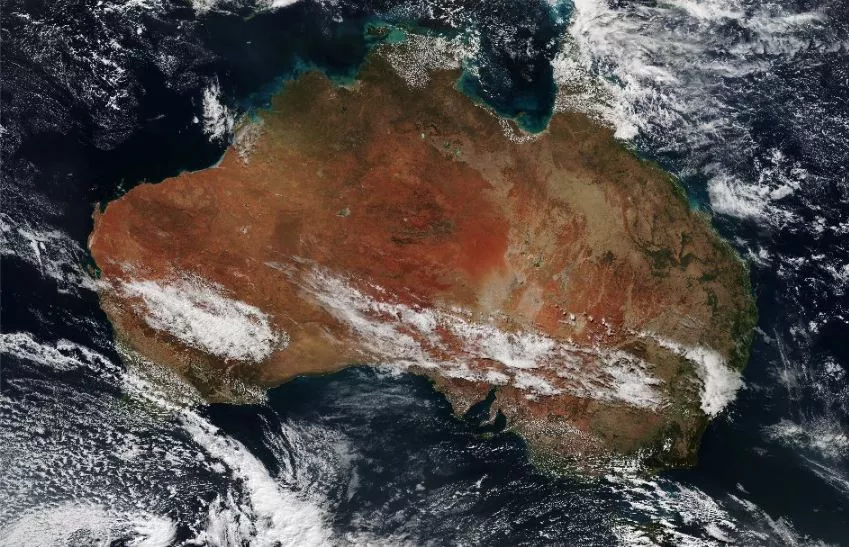Why does the surface of Australia look red when seen from space? The answer is buried in its soil.

When seen from space, the surface of Australia seems to look more like the red planet Mars than it does a continent on Earth. So, why is Australia so red? The nature of soil greatly depends on an array of factors, such as climate, time, composition of the rock the soil came from, and many others. In areas with a generally cool climate, rock weathering (the breaking down of rocks and minerals on Earth's surface) is a physical process caused by freezing water, changes in temperature, plants and animals, and sometimes saltwater absorption. In warmer climates, like Australia, chemical weathering is more common. Chemical weathering occurs when conditions change the materials that make up the rock and soil.
Australia happens to have a perfect environment, hot and dry, for a particular form of chemical weathering called oxidation. This occurs in rocks that contain high amounts of iron. In this type of environment, these rocks actually begin to rust. As the rust expands, it weakens the rock and helps break it apart. The oxides produced through this process give the ground its reddish hue.
Another contributing factor is time. Australia hasn't "recently" (geologically speaking) been affected by ice ages. Unlike much of the Northern Hemisphere, Australian soils are very thick and millions of years old. The remnant iron oxides have been able to accumulate through millions of years of weathering. Unfortunately, although the red soil is beautiful, it is not of much use because it is very poor in nutrients.
To get a closer look at this image and explore soils around the globe, visit NOAAView.
